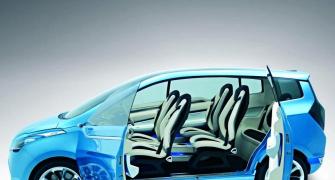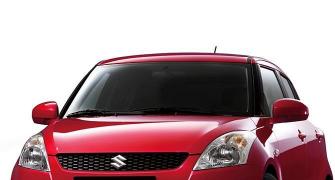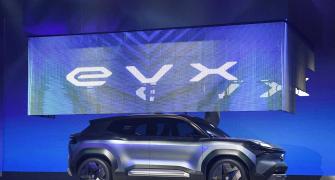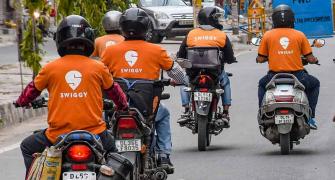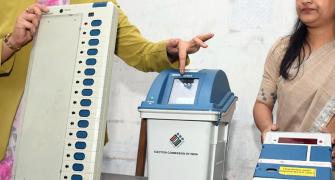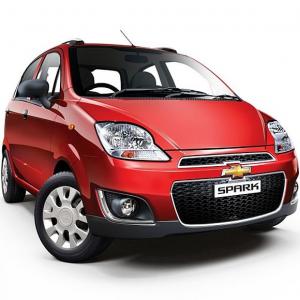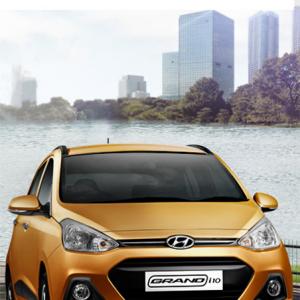Hyundai's entry-level Santro still packs a punch but, flanked by spunkier siblings, seems worn out.

Back in 2006, decision makers at Hyundai's Seoul, South Korea-headquarters were in a dilemma about the fate of the Santro in India.
While the company made plans to replace the Santro (also called Atos Prime in other markets) with the all-new car, i10, an exception was made for India.
The local team led by the marketing and sales unit at Hyundai Motor India persuaded the senior management to retain the Santro, despite the i10 being set for launch in 2007.
The i10 priced above the Santro, of course, went on to establish itself as a top-selling hatchback in India.
But India is now the only noticeable market in the world to still produce the Santro. Even Pakistan, which used to assemble the Santro, stopped.
The five-seater small car with its tall-boy design was Hyundai's first launch in India in 1999, three years after it laid the foundation stone for a facility near Chennai.

Bollywood superstar, Shah Rukh Khan, who has the distinction of being the longest-serving ambassador for a car company, was the first choice for promoting the Santro.
The advertising underlined how the car was a 'sunshine car', depicting Khan chasing actor Preity Zinta in his Santro on deserted lanes under heavy downpour.
A former employee who worked with Hyundai during Santro's early years, says, "The team had to pitch the Santro with youthfulness, without deviating from the promise of the complete family car. The two actors (Khan and Zinta) were roped in to establish that emotional connect with the buyers."
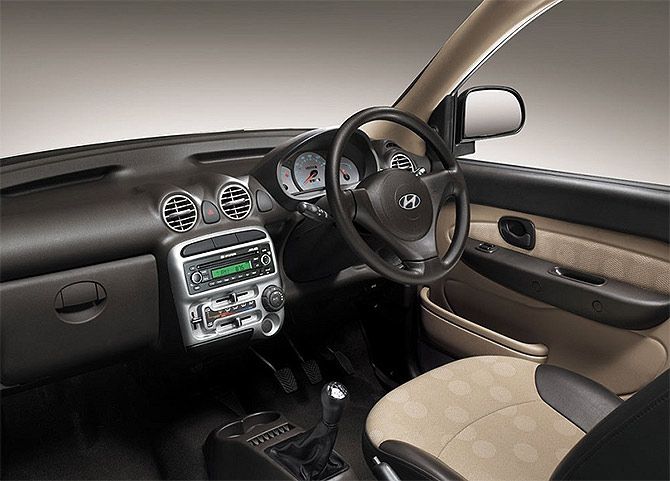
Santro's runaway success pushed Hyundai higher up the ranks, beating homegrown marques such as Tata Motors, to rest just below the long-time market leader and now arch rival, Maruti Suzuki, even to this day.
As the years rolled by, Khan has moved from the Santro to the i10, and now to the compact sedan, the Xcent, tracing the progression of the buyer as well. Khan is expected to be seen in a new advertisement for Hyundai's very popular i20 Elite soon.

Sibling rivalry
Four years after the i10's launch, Hyundai introduced yet another model that threatened the Santro.
The Eon had a price-tag that was Rs 40,000-50,000 cheaper than the Santro. The Santro is priced from Rs 3.22 lakh to 4.27 lakh (ex-showroom, Mumbai).
Futuristic exterior and interior looks of the 800-cc Eon made the car popular. Some months ago, Hyundai planted a 1000-cc engine in the Eon to give it extra thump that attracted fence-sitters earlier complaining about the lack of power in the mini car.
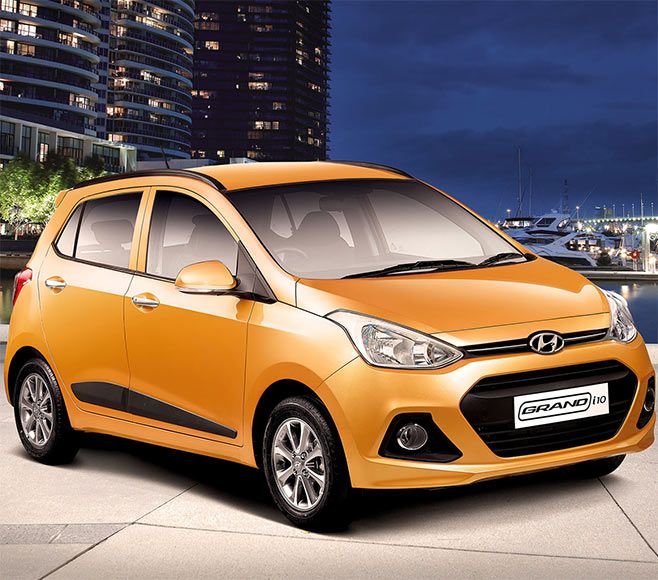
Flanked by the i10 above it and the Eon below, the Santro has ended up with frayed edges.
Its average monthly domestic sales that were 3,652 units in 2012-13, dipped to 3,560 units last year.
So far, it has clocked 2,432 units a month in the first six months of 2014-15. At 14,595, it is a 30 per cent dip compared to the 20,990 units sold in the six months of last year.
The Eon, however, registered an average monthly sale of 6,443 units in the same period, while the Grand i10 and i10 witnessed collective sales of 10,619 units a month during the six months.
 Strong among others
Strong among others
But the Santro's volumes are still better than models like the Tata Nano, Chevrolet Spark and some other models that are priced higher than the Santro.
The Santro sold over 1.36 million units in India and over 535,000 units overseas till date.
Perception problems
One of the major reasons explaining the fall in sales of the Santro is Hyundai's reluctance to extend its current design theme to it, but it is found in most other Hyundai cars.
The Eon, Verna, i20 Elite, Sonata, Elantra and the Grand i10 all sport the fluidic style, that experts say has been a crowd-puller.
"The Santro has the heritage of being one of the most trusted cars in India. But it has found itself as the ugly duckling because of its dated design when compared to the modern looks of its siblings. Because Hyundai does not want to invest in upgrading the Santro, it has no choice but to phase out the car", says an industry analyst on the condition of anonymity.

The car is also fighting to save its image as the family car because it has progressively replaced the ubiquitous Premier Padmini taxi on Mumbai's streets. A CNG-powered, black and yellow Santro is one of the most common taxis on the financial capital's roads.
Increased domestic sales on the back of new models and vibrant exports helped Hyundai Motor India surpass its US counterpart last year, to become the second-largest producer of Hyundai cars in the world, after China.
The company is presently operating at nearly 90 per cent capacity which is at 680,000 a year.
The Santro occupies just five per cent of the total plant capacity. Phasing out the Santro can free up around 33,000-35,000 units worth of capacity a year.
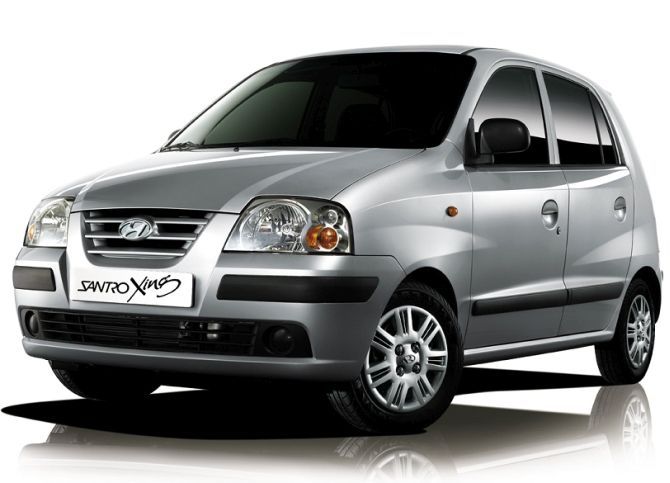
However, Hyundai has clarified that the Santro's production will continue.
"Santro is one of the strong brands in Hyundai Motor India's portfolio and is one of the strong preferences for first-time buyers in the entry-level segment. We affirm Santro is in production and is a part of our portfolio of 10 brands and is available at all dealerships for sale and has a strong fan following", says a spokesperson from Hyundai Motor India.
Car models that did well but made way for a larger strategy
TOYOTA QUALIS: Was withdrawn when its sales peaked because of a strategic call by its maker (launch a more modern and passenger-friendly car). On its entry in 2000, managed to corner 35 per cent market share and increased the multi-purpose vehicle (MPV) segment from 9% in 2000 to 11% in 2003.
In December, 2004, the last month of production, it crossed 4,000-unit sales for the first time, registering 36,700 units between January and December, 2004. Still remembered by tour operators for its refined handling among MPVs.
HONDA CITY: The City’s many generations have been bestsellers in the sedan segment but that hasn’t stopped Honda India from withdrawing older models, to make way for new ones.



